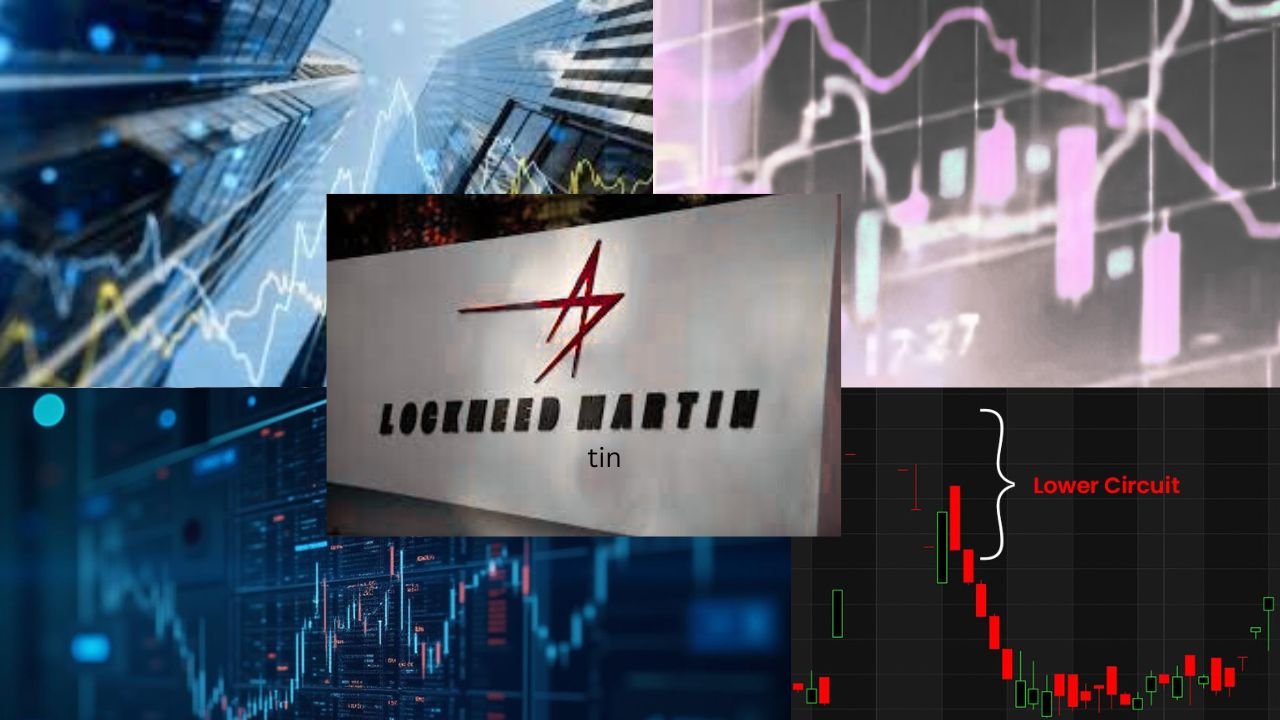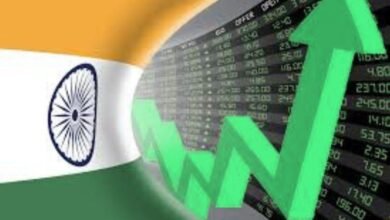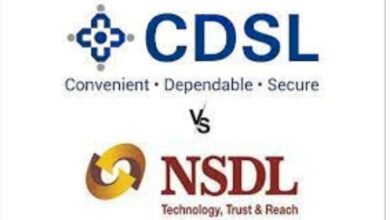Goldman’s $518 Million Bet on Lockheed Martin: A Hidden Signal or a Fortress in a Fragile World
While Wall Street whispers "Hold," Goldman Sachs is quietly buying. We decode the billion-dollar chess move and what it reveals about the future of defense, dividends, and your portfolio.

Introduction: The Quiet Transaction That Roared
In the deafening noise of the stock market, the most important signals are often sent in a whisper. There are no press conferences, no flashy headlines—just a mandatory, data-heavy document filed quietly with the Securities and Exchange Commission.
This quarter, one such whisper roared with the force of a fighter jet’s afterburner.
A 13F filing revealed that Goldman Sachs Group Inc., one of the most sophisticated and influential financial institutions on the planet, has methodically increased its stake in defense titan Lockheed Martin Corporation (NYSE: LMT) by 4.6%.
This wasn’t a trivial purchase. Goldman added over 51,000 shares to its position, bringing its total ownership to a colossal 1.16 million shares. The value of this stake? A staggering $518.9 million.
On the surface, this might seem like just another Tuesday for a multi-trillion-dollar asset manager. But dig a layer deeper, and a fascinating contradiction emerges—a puzzle that every serious investor should seek to understand. While Goldman Sachs was actively buying, the collective wisdom of Wall Street analysts has stamped Lockheed Martin with a lukewarm “Hold” rating and a consensus price target of $506.65.
So, what is going on here?
Why is the “smart money” at Goldman deploying over half a billion dollars into a stock that the rest of the street deems merely a “Hold”? Is this a quiet vote of no-confidence in the market’s consensus? Or is Goldman playing a different game entirely—a longer, more strategic game that looks beyond next quarter’s earnings and towards the geopolitical realities of the next decade?
In this deep-dive analysis, we will unpack this billion-dollar chess move. We will explore the three pillars that likely underpin Goldman’s thesis: the unshakable reality of global conflict, the magnetic allure of Lockheed’s dividend fortress, and the profound difference between a stock’s “rating” and its strategic value.
This is more than a story about a single transaction. It’s a masterclass in institutional thinking and a critical look at how to find opportunity where others see stagnation.
Section 1: Anatomy of the Bet – Deconstructing the 13F Filing
Before we can understand the “why,” we must first appreciate the “what.” The numbers themselves tell a powerful story of conviction.
-
The Player: Goldman Sachs Group Inc. This is not a flighty hedge fund chasing a momentum trade. This is a global financial institution whose every move is scrutinized. Their research department is legendary, and their capital allocation decisions are built on mountains of data and deep macro-economic analysis. When they make a move, it’s deliberate.
-
The Action: A 4.6% increase in their holding. This is a meaningful “topping up.” It signals that their existing conviction in Lockheed Martin has not only been re-affirmed but strengthened. They had a chance to trim their position or hold steady; instead, they chose to buy more.
-
The Scale: 1,161,687 shares worth $518,937,000. Let’s humanize that number. It’s more than the GDP of some small nations. This is a high-conviction bet. It represents a significant allocation of capital that must be justified by a robust, long-term thesis. A position of this size isn’t a speculative punt; it’s a strategic pillar within a larger portfolio.
-
The Ownership: 0.50% of the entire company. While half a percent may not sound like much, for a company the size of Lockheed Martin (with a market cap north of $100 billion), it makes Goldman Sachs one of its significant institutional shareholders. They have a real seat at the table.
This filing is our first clue. It tells us that one of the world’s most informed investors looked at Lockheed Martin—its business, its future, its valuation—and decided that the current price represented a compelling opportunity to increase its exposure. This action speaks far louder than any analyst report.
Section 2: The Dividend Fortress – Getting Paid While You Wait
Now, let’s turn to the second piece of the puzzle, a crucial element that likely forms the bedrock of Goldman’s thesis: Lockheed Martin’s role as a dividend powerhouse.
In a world of economic uncertainty, high inflation, and volatile growth stocks, a reliable, growing dividend is like a lighthouse in a storm. It provides a tangible return, a floor for the stock’s valuation, and a powerful psychological comfort.
Lockheed Martin recently announced a quarterly dividend of $3.30 per share. Let’s break down why this is so compelling:
1. A Yield That Matters:
This dividend translates to a forward annual yield of approximately 3.0%. In an environment where the 10-year Treasury bond offers a competing “risk-free” return, a 3% yield from a blue-chip industrial giant is highly attractive. It’s a respectable income stream on its own, but it’s attached to a business with potential for capital appreciation—something a bond can never offer. For a massive fund like Goldman’s, this steady cash flow is invaluable.
2. The Payout Ratio: A Story of Sustainability
The dividend’s payout ratio stands at 74.32%. The payout ratio measures what percentage of a company’s net income is paid out as dividends. A number in the 70s might seem high for a tech company that needs to reinvest heavily for growth. But for a mature, stable business like Lockheed Martin, it’s a different story.
Lockheed’s revenues are not based on fickle consumer trends. They are built on multi-decade, government-backed contracts for essential national security assets like the F-35 fighter jet program, missile defense systems, and space technology. This creates incredibly stable, predictable, and massive cash flows. A 74% payout ratio here doesn’t signal distress; it signals a management team confident in its future earnings and committed to returning capital to its shareholders. Goldman Sachs knows this. They see a secure, bond-like income stream backed by the full faith and credit of the U.S. government and its allies.
3. The “Total Return” Proposition:
For an institutional investor, the game is “total return”—the combination of stock price appreciation and dividends. The dividend acts as a powerful anchor. If the stock price stagnates for a year, an investor still earns a 3% return. If the stock price falls, the dividend yield rises, making it even more attractive to new buyers and providing a natural support level.
Goldman isn’t just betting on Lockheed’s stock going up; they are buying a reliable cash-flow machine that pays them handsomely to wait for their thesis to play out.
Section 3: Decoding the “Hold” – Why Goldman Sees What Wall Street Overlooks
This brings us to the core of our analysis: the glaring disconnect between Goldman’s buying and Wall Street’s “Hold” rating. A “Hold” rating is the analyst equivalent of a shrug. It suggests the stock is fairly valued, with limited upside and limited downside. It implies mediocrity.
So why would Goldman pour half a billion dollars into “mediocrity”? Because they are likely looking at a different set of inputs.
What the “Hold” Rating Sees:
-
Maturity and Slow Growth: Lockheed is not a hyper-growth startup. Its growth is tied to national defense budgets, which are massive but tend to grow in the single digits. Analysts modeling for explosive growth will naturally be underwhelmed.
-
Valuation: LMT often trades at a reasonable, but not “cheap,” price-to-earnings ratio. It rarely goes on a deep discount sale because its earnings are so reliable.
-
Political Risk: The company’s fate is intrinsically linked to government spending. A shift in political priorities or a move towards dovish foreign policy could theoretically impact its order book.
What Goldman Sachs Likely Sees (The Contrarian Thesis):
1. Geopolitical Risk is a Secular, Not a Cyclical, Trend:
This is the big one. The era of post-Cold War peace and globalization is unequivocally over. The world is becoming a more dangerous and fragmented place.
-
Europe Re-arming: The conflict in Ukraine has forced NATO countries to wake up and dramatically increase their defense spending to meet the 2% of GDP target. This means a new, multi-decade cycle of orders for Lockheed’s jets, missiles, and defense systems.
-
Tensions in the Indo-Pacific: The rising assertiveness of China has put allies like Japan, South Korea, Australia, and Taiwan on high alert. They are all customers or potential customers for Lockheed’s most advanced technology.
-
Persistent Threats in the Middle East: Ongoing instability ensures a constant demand for surveillance, defense, and strike capabilities.
Goldman is not betting on a war. They are betting on the grim reality that in an unstable world, defense spending is no longer discretionary; it is essential. This transforms Lockheed from a cyclical industrial company into a secular growth story, a transformation the “Hold” rating may be under-appreciating.
2. The “Unbreakable Moat”:
Lockheed Martin doesn’t just have a competitive advantage; it has an almost insurmountable moat. You cannot simply decide to build a 5th-generation stealth fighter. It requires decades of R&D, trillions in investment, and deep, classified integration with the military-industrial complex. The F-35 program alone will generate revenue for the next 40 years through production, upgrades, and maintenance. This is a level of revenue visibility that most companies can only dream of.
3. The Space and Hypersonics Wildcard:
While legacy programs provide stability, Lockheed is at the forefront of the next generation of defense: space and hypersonics. They are a key partner for NASA and the U.S. Space Force. As the weaponization of space and the race for hypersonic missiles accelerate, Lockheed is perfectly positioned to capture massive new streams of revenue. This provides a hidden growth engine that a simple “Hold” rating might miss.
In essence, Goldman is looking past the “boring” stability and seeing a fortress. A fortress with a deep moat, a reliable cash-flow engine (the dividend), and new, high-tech turrets being built for the challenges of the future.
Conclusion: A Lesson in Seeing Value
The story of Goldman Sachs’ increased stake in Lockheed Martin is a masterclass for every investor. It teaches us to look beyond the surface-level noise and analyst consensus to understand the deeper, structural forces at play.
Goldman’s $518 million bet is not a gamble. It is a calculated investment based on a clear-eyed view of the world. It is a bet that geopolitical instability will necessitate sustained, long-term defense spending. It is an investment in the predictable, fortress-like cash flows of a company with an unbreakable economic moat. And it’s an appreciation for the power of a solid 3% dividend yield that pays you to wait while this long-term thesis unfolds.
While the consensus may be a non-committal “Hold,” Goldman’s actions suggest a different rating: “A strategic necessity for a serious long-term portfolio.”
For the everyday investor, the lesson is not to blindly copy every move an institution makes. The lesson is to learn how they think. It’s about questioning the consensus, understanding the difference between a stock’s price and its value, and recognizing that sometimes the most powerful investments aren’t the ones everyone is screaming about, but the ones being quietly accumulated by those who see the world not just for what it is, but for what it is becoming.
Disclaimer: This article is for informational and educational purposes only. It is not intended to be financial advice. The analysis presented is based on publicly available information and represents an interpretation of potential investment theses. The stock market is inherently risky, and readers should conduct their own research and consult with a qualified financial advisor before making any investment decisions.





